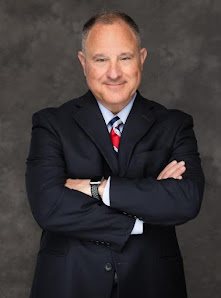On a typical day, police pull over 50,000 drivers -
more than 20 million people a year. “Police have enormous discretion in making
traffic stops,” Farhang Heydari of the Policing Project at the New York
University School of Law told The Crime Report. “If you’re driving, it’s
impossible not to break a traffic law - there are so many of them.”
However, there is a racial bias in police stops.
People of color are more likely to be the subject of traffic stops, a
phenomenon known as “driving while Black.”
An analysis of data collected by local police
departments on millions of traffic stops over the last several years, conducted
by ABC News, shows that Black drivers or pedestrians were more likely to be
stopped by police than white drivers or pedestrians in several major U.S.
cities. This was calculated after accounting for the demographics of the cities
and counties those police departments serve.
In some cases the stops turn deadly. Philando
Castile was shot to death, in his vehicle, by police in St. Paul, Minnesota,
during the summer of 2016. According to ABC News, between 2002 and 2016,
Castile was stopped 52 times by police, according to a complaint filed by the
American Civil Liberties Union, resulting in 86 minor traffic offenses totaling
$6,588 in fines and fees.
This year, across the river in Minneapolis, George
Floyd, a 46-year-old Black man, was killed after being pulled from his vehicle.
The video of a white police officer kneeling on Floyd’s neck for seven minutes
and 46 seconds while Floyd was handcuffed, lying face down and begging for his
life, incited unrest in cities across the country.
In Minneapolis, Black drivers were five times more
likely to be stopped by police than white drivers. In almost every major city
examined by ABC News, the analysis shows at least some disparity in traffic
stops. In some cities, those disparities were significant. In Chicago and San
Francisco, Black drivers were four times more likely to be stopped. And in Philadelphia
and Los Angeles, Black drivers were about three times more likely to be
stopped.
North Carolina was the first state in the nation to
mandate the collection of traffic stops data. Frank R. Baumgartner, Derek A.
Epp and Kelsey Shoub, authors of “Suspect Citizen,” wrote in The News and
Observer, that Black drivers are much more likely to be pulled over. In North
Carolina, city by city, “we also found that in almost every case, across the
state, Blacks constitute a much higher share of the traffic stops than of the
local population.”
After a stop, 2.35% of white drivers are searched,
compared to 5.05% of Black drivers and 4.74% of Hispanics. According to the
authors, “This means that blacks are subjected to about twice the odds of being
pulled over, and then after that more than twice the odds of being searched.”
Once people of color are arrested, and they are
arrested per capita more frequently than whites, the punishment is more severe.
According to a report commissioned by the Massachusetts Supreme Judicial Court
Chief Justice and carried out by Harvard Law School, Blacks make up 6.5% of
Massachusetts’ population but account for 17.1% of criminal cases. Latino
people make up 8.7% of the population and 18.3% of cases.
According to the CommonWealth, among those being
sentenced to prison, black and Latino defendants received sentences that were,
on average, 168 and 148 days longer than sentences given to white defendants.
According to the data, this is about much more than driving while Black - it is about racial bias in stopping vehicles, searching vehicles, arresting people, as well as, punishing people of color.
Matthew T. Mangino is of counsel with Luxenberg, Garbett, Kelly & George
P.C. His book “The Executioner’s Toll, 2010” was released by McFarland
Publishing. You can reach him at www.mattmangino.com and
follow him on Twitter @MatthewTMangino.
To visit the column CLICK HERE








No comments:
Post a Comment